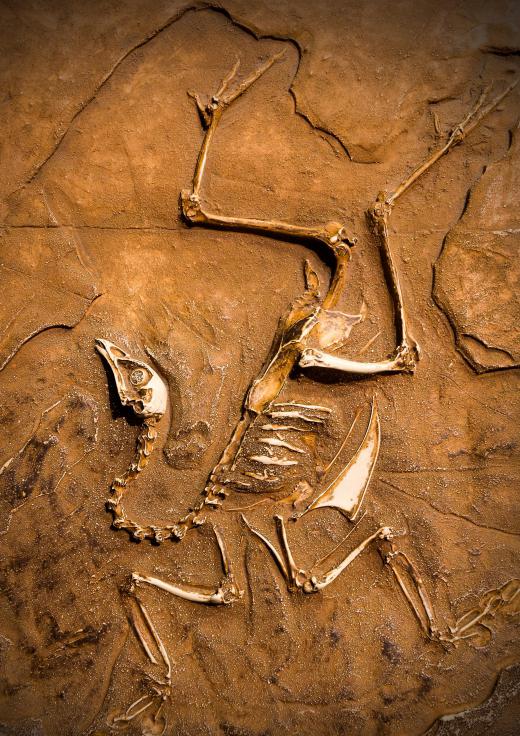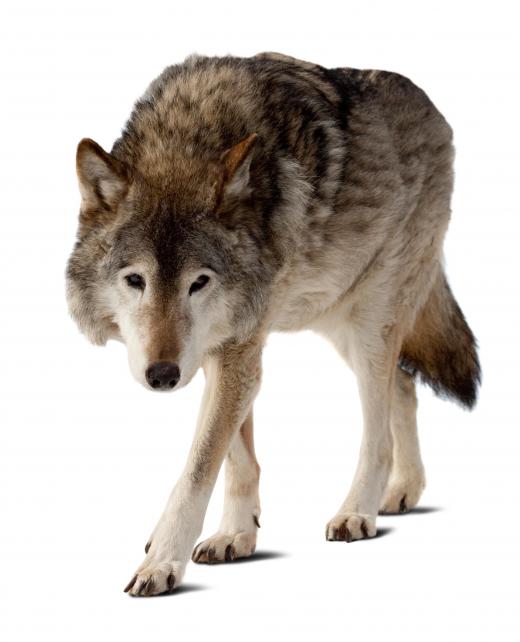What is Convergent Evolution?
 Michael Anissimov
Michael Anissimov
Convergent evolution is a common theme in the evolution of animals. It occurs when two unrelated species independently evolve similar traits to cope with specific evolutionary challenges, like living in ice-cold water or eating ants. Sometimes convergent evolution is so powerful that creatures that began as entirely different animals start to look almost the same, as is the case with the skulls of the extinct marsupial Thylacine and the living Grey Wolf.
There are hundreds or even thousands of examples of convergent evolution in nature. The wings of pterosaurs, bats, and birds have many similarities in structure, even though they are only very distantly related. Convergent evolution has occurred among the Giant Armadillo of North America, the Giant Anteater of South America, the Giant Pangolin of Africa, and the Spiny Anteater (echidna) of Oceania. These animals all have a similar body shape, including a long proboscis, because of their adaptations to consuming ants, even though their most recent common ancestor is over 155 million years old and looks nothing like them.

Another classic example of convergent evolution are spines, found among a variety of small mammal groups, including porcupines (placental mammals), the echidna (monotremes), and tenrecs (unique Madagascar animals that are outlying placentals). The re-occurrence of spines suggests both their broad evolutionary usefulness and the fact that spines can incrementally evolve from a variety of mammalian starting points. The situation is similar with spines found on plants such as cacti and many others. These spines evolved via convergent evolution many separate times and in separate places.

Some of the most noticeable instances of convergent evolution concern similarities between marsupials and placental mammals. For instance, the marsupial mole is a lot like the placental mole, the marsupial Mulgara is like the placental mouse, the marsupial Tasmanian Devil has resemblances to the placental Badger. Similarly, the extinct Marsupial Lion had retractable claws, like modern-day felids. The similarity between the Thylacine and Grey Wolf has already been mentioned.

One of the most consistent and popular convergent targets throughout evolutionary history has been the crocodilian body-form. Certain labyrinthodont amphibians, which were among the first land animals and lived between 350 and 210 million years ago, had the basic crocodile body shape, even though they were amphibians rather than reptiles. Early archosaurs resembling crocodiles evolved around 250 million years ago. Phytosaurs, which resemble crocodiles more than any of the other groups mentioned here, flourished in the late Triassic (220 - 200 million years ago). Champosaurs, another similar-looking archosaur group, evolved in the Late Triassic or Early Jurassic period, also about 200 million years ago. Crocodylomorphs, a large group of crocodile-like animals which includes modern crocodilians, have existed since 230 million years ago. Modern crocodilians only evolved in the Late Cretaceous, about 85 million years ago.
There are countless additional examples of convergent evolution. Familiarize yourself with enough animals, and convergent patterns always emerge.
AS FEATURED ON:
AS FEATURED ON:















Discussion Comments
Convergent evolution is proof against evolution. For instance, flight must have evolved four different times. One time is impossible, but four times is utterly silly.
@BostonIrish
Evidence indicates otherwise. If we are to decide between divergent evolution vs. convergent evolution, it would seem likely that humans diverged from monkeys over the course of millions of years, resulting in certain species of advanced apes which are now extinct. Our own species, the homo sapiens, evolved and overcame these other species of advanced apes and effectively came to dominate kingdom animalia. In the game of "survival of the fittest," humans are driving out and destroying other animal species.
Convergent evolution in mammals seems to exist among placentals and marsupials. There is a debate among scientists concerning whether this is a result of being a member of a common family or is purely a result of convergent evolution due to similar environments. It is hard to tell the difference. Perhaps humans and monkeys are a result of convergent evolution.
Convergent evolution reveals a universal pattern which is prevalent even in the evolution of human language. There are often patterns in speaking which show up in areas which are very far away from each other and exist to describe similar things. Some of these things may be related to a similar belief system or a natural phenomenon. Convergent evolution may result in words which sound almost exactly alike and mean similar things, but historically, this often has nothing to do with loanwords.
Post your comments